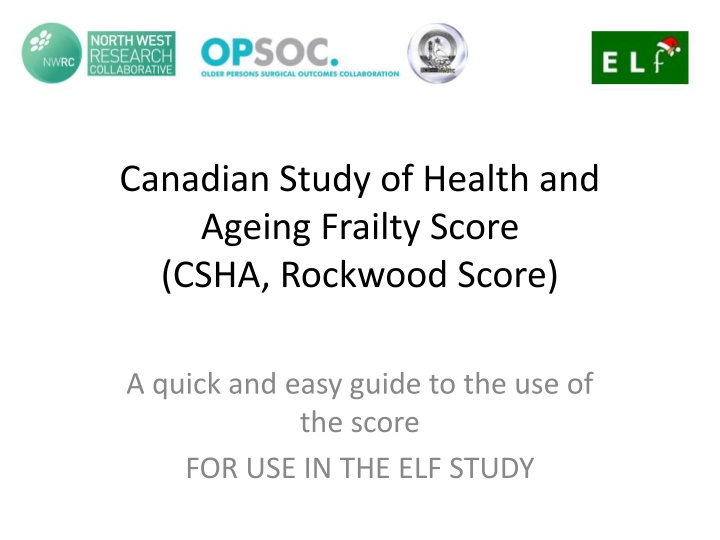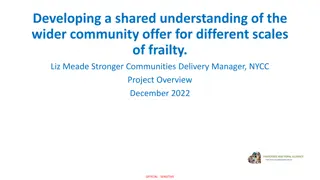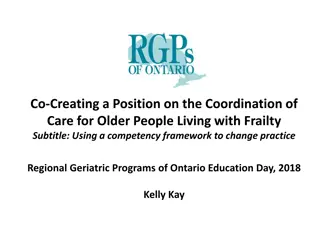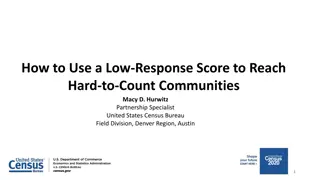
Canadian Study of Health and Ageing Frailty Score (CSHA)
Learn about the CSHA Frailty Score, a valuable tool for assessing frailty in elderly patients, particularly useful for those undergoing major surgical procedures. The score considers mobility, independence, daily activities, and co-morbidities to categorize individuals based on their level of frailty. Explore different categories, from independent individuals to those requiring various levels of assistance, providing insights into their functional abilities and support needs.
Uploaded on | 1 Views
Download Presentation

Please find below an Image/Link to download the presentation.
The content on the website is provided AS IS for your information and personal use only. It may not be sold, licensed, or shared on other websites without obtaining consent from the author. If you encounter any issues during the download, it is possible that the publisher has removed the file from their server.
You are allowed to download the files provided on this website for personal or commercial use, subject to the condition that they are used lawfully. All files are the property of their respective owners.
The content on the website is provided AS IS for your information and personal use only. It may not be sold, licensed, or shared on other websites without obtaining consent from the author.
E N D
Presentation Transcript
Canadian Study of Health and Ageing Frailty Score (CSHA, Rockwood Score) A quick and easy guide to the use of the score FOR USE IN THE ELF STUDY
FOR ELF STUDY CSHA frailty score used for patients 65 years old requiring major general surgical procedures Performed pre-operatively Ideally performed during initial clerking Centres around information already collected on admission: Mobility Independence Activities of daily living Background co-morbidities
Independent No underlying medical co-morbidities Regularly exercise Fit and active
Independent No underlying medical co-morbidities Do not regularly exercise More sedentary lifestyle compared to Category 1
Independent Underlying co-morbidities Symptoms from co-morbidities do not impair daily function Example: COPD patient with shortness of breath controlled using inhalers
Independent Underlying co-morbidities Medical conditions cause symptoms which limit function Example: Angina attacks which limit mobility and exercise tolerance
Requires assistance (from professionals or family members) with tasks such as cooking, cleaning, shopping, driving, etc. Does not require assistance with personal care Can not mobilise freely Example: someone still living at home but with regular input from social services i.e. Meals on Wheels, regular cleaner
Requires assistance (from professionals or family members) with tasks such as cooking, cleaning, shopping, driving, etc. Also requires assistance (can be professional or family members) for personal care (bathing, dressing, eating, toileting etc.) Could not mobilise without a stick or zimmer frame Example: someone requiring TDS or QDS social service input or living in residential level care.
High level of dependence for all cares Example: someone living in nursing level care or someone who is barely mobile At the far end of the spectrum this could represent someone who is terminally ill or receiving end of life care






















